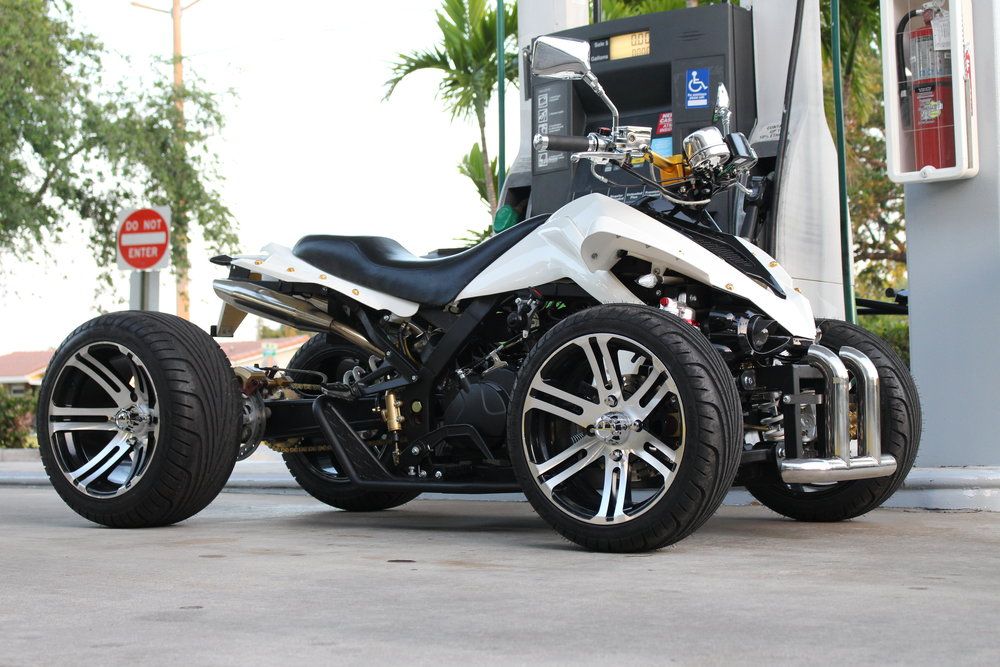UTVs and other off-highway vehicles in Virginia can only use certain public roads for limited distances for the purpose of connecting trail sections. It is not possible to register a UTV as street legal in Virginia.
However, it is possible to make a UTV street legal in Virginia by registering in another state. The resulting title, registration, and license plate will allow you to drive your side-by-side on roads, highways, and city streets in Virginia and beyond.
This page covers street legal UTVs in Virginia from top to bottom including relevant laws, details about OHV areas, and times when a UTV not registered as street legal can be driven on local roads. Review the following resources to learn more.
Ready to roll? Register out of state now with the help of our expert team.
We have made our best effort to include all relevant details, but something we did not cover might apply to your situation. We are enthusiasts, not attorneys. This is not legal advice.
In order to register a UTV as a regular street legal vehicle through the Virginia DMV, it would need to fit Virginia’s definition of a street legal vehicle and pass a Virginia motor vehicle inspection. It does not appear that Virginia’s laws allow for this.
The term All-Terrain Vehicle (ATV) is used by Virginia as a catch-all for off-highway vehicles including UTVs and side-by-sides. Virginia law defines an ATV as “a motor vehicle having three or more wheels that is powered by a motor and is manufactured for off-highway use.” According to the Virginia DMV, “Operation of all-terrain vehicles on any public highway or other private property is prohibited” except in limited circumstances described in a later section below.
None of the vehicle categories found in the Virginia Code allow any vehicle fitting the description of an ATV to be registered as street legal.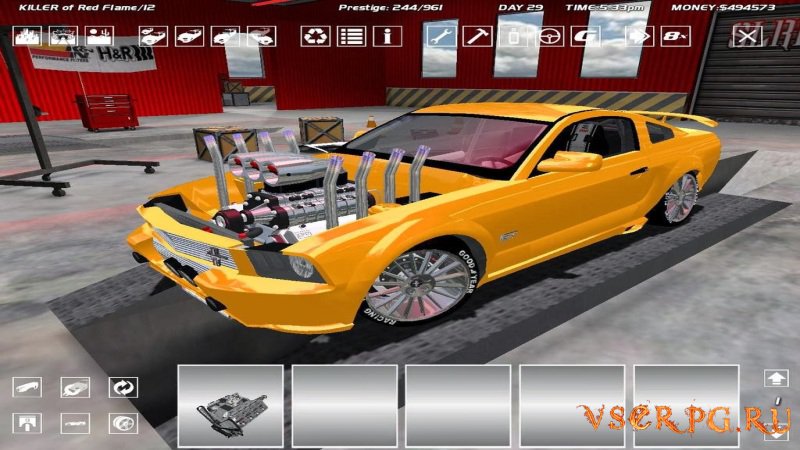 Motorcycles cannot have more than three wheels, autocycles must have three wheels, and Low-Speed Vehicles must have a top speed over 20 MPH but not exceeding 25 MPH.
Motorcycles cannot have more than three wheels, autocycles must have three wheels, and Low-Speed Vehicles must have a top speed over 20 MPH but not exceeding 25 MPH.
Additional resources used to reach these conclusions are linked in the Laws, Codes, and Other Resources section below.
In states like Montana and South Dakota, the vehicle code allows UTVs to be registered as street legal vehicles. You can register your UTV in those states without ever leaving your home. Once registration is complete and the required equipment is installed, your UTV will be street legal in the state of Virginia with an out-of-state registration (see How to Make Your UTV Street Legal).
With a street legal UTV, you could ride from the coast to the Blue Ridge Parkway without a second thought. You could even continue the parkway into Tennessee or drop into an OHV area like Windrock. Imagine tackling city streets, rural roads, highways, and interstate travel – all in your UTV. Our team of experts can help make that happen by registering your UTV as street legal on your behalf while you’re planning your first street legal adventure.
Our team of experts can help make that happen by registering your UTV as street legal on your behalf while you’re planning your first street legal adventure.
Because the only way to make a UTV street legal across the board in Virginia is to register in another state, getting legal does not involve any parts specific to Virginia. Parts required for road use of other UTVs are listed in a later section below.
Thanks to reciprocity agreements between states, a vehicle only needs to have the parts required by the state where it is registered. That means a UTV with an out-of-state registration can be driven on public roads in Virginia without needing any equipment required by Virginia and without needing to pass a Virginia inspection.
There are also some parts we suggest leaving off which are rarely allowed on street legal vehicles in any state.
GET STREET LEGAL PARTS ON GRITSHIFT
instagram.com/p/Bz1YzbkjEUw/?utm_source=ig_embed&utm_campaign=loading" data-instgrm-version="14">View this post on Instagram
A post shared by Evan Throckmorton (@evan_throckmorton)
You won't need to do this with a street legal UTV!
Because street legal UTVs are a small niche, local law enforcement may not know that a UTV can be made street legal in Virginia. While we are not attorneys, we always suggest carrying physical copies of your UTV’s registration and insurance proofs and being knowledgeable about the ways your vehicle is legal for road use (see Knowing Your Legality).
Vehicles licensed in other states can be driven legally in Virginia thanks to registration reciprocity agreements between states. Virginia’s registration reciprocity statute is linked in the resources below. You should not need to worry about title transfer windows if you maintain residency in another state or your UTV is registered to an LLC in another state. In some cases, it might not be possible to transfer your registration to Virginia from another state because of vehicle type mismatches between states.
In some cases, it might not be possible to transfer your registration to Virginia from another state because of vehicle type mismatches between states.
Keep in mind that street legal UTVs in Virginia need to observe all laws and rules of the road just as a car would.
Virginia does not have specific helmet laws for street legal UTVs on public roads
Virginia requires all occupants to wear helmets in OHV areas
We suggest wearing helmets on public roads for the following reasons
In considering whether to wear helmets in a street legal UTV registered out of state, it’s best to do what local authorities are most familiar with. In Virginia, occupants of UTVs and other OHVs that have not been street legalized are required to wear helmets in the limited times they are allowed on public roads.
It is also worth noting that Virginia’s motorcycle helmet law requires all riders to wear helmets and eye protection with only two exceptions. Helmets and eye protection are not required for occupants of autocycles with “nonremovable roofs, windshields, and enclosed bodies” and eye protection is not required for motorcycles with windshields. The law does not specify what constitutes an “enclosed body.”
Helmets and eye protection are not required for occupants of autocycles with “nonremovable roofs, windshields, and enclosed bodies” and eye protection is not required for motorcycles with windshields. The law does not specify what constitutes an “enclosed body.”
All things considered, while a street legal UTV does not fit Virginia’s legal definition of an autocycle or a motorcycle, local officers might still expect occupants to wear helmets since they are required for non-street-legal UTVs and open-top autocycles. For these reasons and for safety reasons, we suggest wearing helmets and eye protection whenever you operate a UTV on public roads in Virginia.
Keep in mind that helmet laws need to be followed on a state-by-state basis. Before you travel, learn the helmet situation in any state you plan to drive in. See other states
View this post on Instagram
A post shared by Evan Throckmorton (@evan_throckmorton)
Beyond basic equipment like working headlights and taillights, Virginia does not have any statewide equipment requirements for operation within OHV areas, public lands, and other similar off-road spaces. Additionally, Virginia does not require OHVs to be registered with the state for off-road use. Virginia requires all occupants to wear helmets in OHV areas.
Additionally, Virginia does not require OHVs to be registered with the state for off-road use. Virginia requires all occupants to wear helmets in OHV areas.
Many OHV areas in the United States require a Forest Service-qualified spark arrester and a good working muffler with a maximum volume of about 80-90 decibels. OHV areas within Virginia may have their own requirements including specific equipment, special permits, engine size restrictions by rider age, or other factors, so be sure to check ahead when you plan to travel.
Hey! This section is about UTVs that have not been made street legal through the means described above.
This section is about vehicles that do not have street legal registrations.
In Virginia, UTVs and other off-highway vehicles may only use approved roads to connect trail sections.
Unless otherwise stated through a local ordinance or county permit:
OHVs can only use approved roads for the purpose of connecting trail sections
OHVs can only drive on these roads during daylight hours
Total distance driven cannot exceed 1 mile
Speed cannot exceed 25 MPH
All occupants must wear helmets
There is currently no online resource answering this question.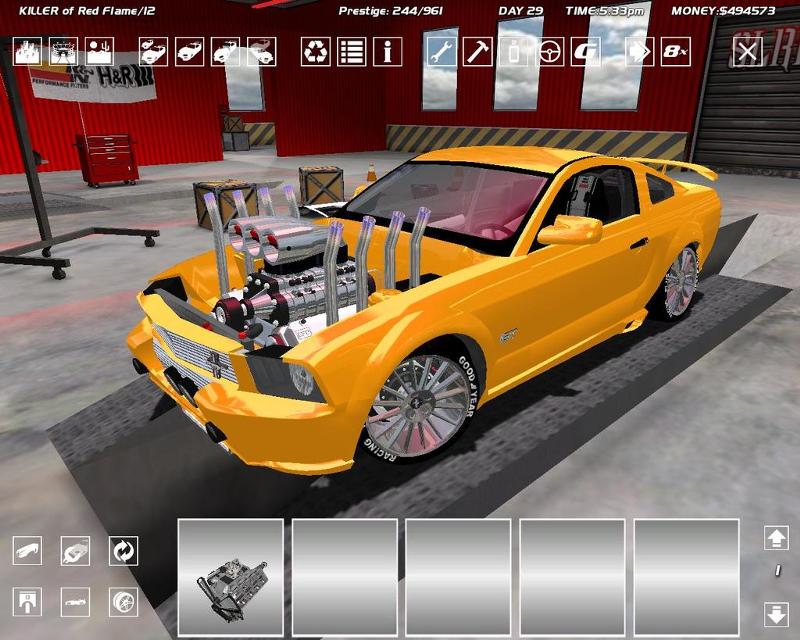 Contact your local DMV or local authorities to learn which roads are approved in your area, and please contact us if an online resource becomes available.
Contact your local DMV or local authorities to learn which roads are approved in your area, and please contact us if an online resource becomes available.
In practice, counties often have unique rules that differ from the statewide laws. For example, in Buchanan County, OHVs can drive for any distance on roads marked 25 MPH or less and can drive for up to 5 miles on roads with higher speed limits (though the vehicle’s speed still cannot exceed 25 MPH). Additionally, most roads within the Lee Ranger District (under Forest Service management) are fully open to OHV travel. Roads are approved through local ordinances or county permits.
Though state registration is not required, most counties require permits to be obtained before public road use. Additionally, local areas often require certain equipment. Whether required or not, we strongly suggest having basic equipment like working headlights and taillights, a good working muffler and brakes, and a windshield and rollover protection before driving on public roads. Contact your local DMV or local law enforcement to see what is required in your area.
Contact your local DMV or local law enforcement to see what is required in your area.
Virginia law allows OHVs to cross public roads that are not approved for OHV use. These crossings must be made as quickly and directly as possible.
Off-highway vehicles used for industrial purposes like maintenance or agriculture may qualify to be categorized as Utility Vehicles or Farm Utility Vehicles. These vehicle categories can operate more freely on public roads. Contact your local DMV or local law enforcement to learn more.
• • •
Hey! This page is part of our Nationwide Street Legal UTV Guide which covers all 50 states plus Washington, D.C. and five US territories. It also covers in-depth topics like registration, insurance, and what to do if you get pulled over. Check it out to learn all about street legal UTVs!
For questions outside the scope of this guide, try contacting:
Virginia Department of Motor Vehicles
Virginia Department of Wildlife Resources
Virginia State Parks
These are the sources we used to create this guide.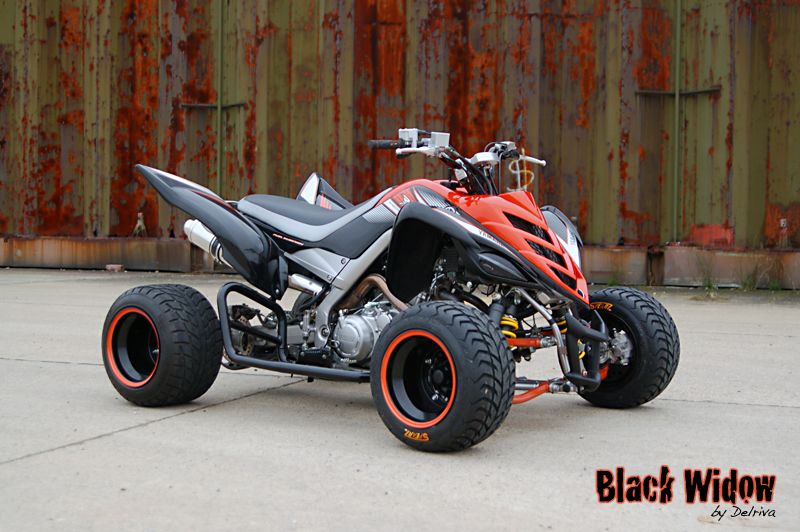 If you find any inaccurate or outdated information, please contact us and we will be happy to address it.
If you find any inaccurate or outdated information, please contact us and we will be happy to address it.
Note: Virginia often refers to all off-highway vehicles as All-Terrain Vehicles (ATVs).
Google User Map: Virginia Legal OHV Trails by Matt Alexander (Not our map, not official, and not confirmed)
Virginia DMV: All-Terrain Vehicles
Buchanan County, Virginia OHV road use laws, specific roads (Third-party website)
Forest Service: Lee Ranger District OHV Areas
Tazwell County, Virginia OHV road use laws (Third-party website)
Virginia Statute 46.2-915.1 (OHV use on public roads, crossings)
Virginia Motor Vehicle Code Chapter 6 Article 5 (Virginia vehicle registration reciprocity)
Virginia Motor Vehicle Code Chapter 8 Article 13 (Motorcycles, Mopeds, and All-Terrain Vehicles)
Virginia Statute 46. 2-100 (Vehicle definitions, definition of a highway)
2-100 (Vehicle definitions, definition of a highway)
Virginia Statute 46.2-910 (Virginia motorcycle helmet law)
Virginia Code
READ LESS, RIDE MORE.
Our expert team can register your UTV as street legal while you’re out riding.
Written by Brent Huntley in ATVs
Continuing in our series of articles analyzing the ATV laws in every state, which stemmed from this article, we are addressing the ATV laws in Virginia in this article. It should also be noted that, while I am an attorney, I am not your attorney and am not giving legal advice. If you have questions, you should consult a local attorney.
There are not a whole lot of ATV laws in Virginia so lets just jump in.
Virginia defines an ATV or all-terrain vehicle as a three-wheeled or four-wheeled motor vehicle, generally characterized by large, low-pressure tires, a seat designed to be straddled by the operator, and handlebars for steering, which is intended for off-road use by an individual rider on various types of non-paved terrain.
The rules and laws described herein do not apply if you are riding on your own private land, or if the ATV is used for farming activities.
Any new ATV over 50cc must be titled in Virginia. You may also request a title for a used ATV if you need one to secure a loan or otherwise provide proof of ownership. To title your ATV, take the following steps:

You are not required to register your ATV or UTV in Virginia.
Generally, you are not permitted to operate an ATV or UTV in Virginia on any public highway, or other public property, unless it has been authorized by the proper authorities.
You may not operate an ATV or UTV on the private land of another unless you have written permission from the owner.
Buchanan County has some exceptions to the normal restrictions in Virginia. You may operate an ATV or UTV on the highways in Buchanan County where the following conditions are met:
A full size ATV may not be operated in Virginia by an person under the age of 16. Youth-sized ATVs 90cc and under may be operated by youth aged 12 and older. Children under 12 are limited to 70cc ATVs.
Youth-sized ATVs 90cc and under may be operated by youth aged 12 and older. Children under 12 are limited to 70cc ATVs.
My New Favorite Accessory for Winter Riding
Over the past several months, as the weather has gotten cooler, I have been testing out the Venustas Heated Vest for my cold-weather photography. I wrote all about it over at Photography &...
Continue Reading
link to How To Use An ATV SpreaderHow To Use An ATV Spreader
One of the greatest things about summer is yard work. As the heat and humidity rise, so do the plants and flowers. The advent of technology has made seeding and fertilizing, a job that used to...
As the heat and humidity rise, so do the plants and flowers. The advent of technology has made seeding and fertilizing, a job that used to...
Continue Reading
Articles Reviews News Video reviews Delivery and payment Team Company video blog Reviews
Regina Maslova
Date: 19.01.2020
spring. Fans of quadrics are well aware that even in severe frosts you can enjoy the ride.
Snow-covered roads, icy climbs and other delights of winter will provide a unique experience of extreme ATV driving, as well as a lot of fun and vivid impressions. However, before you get behind the wheel of a “steel friend”, you need to prepare it for the upcoming winter walk.
Preparation is not only a necessary condition for the smooth operation of equipment in low temperatures, but also a guarantee of the safety of the driver and passengers.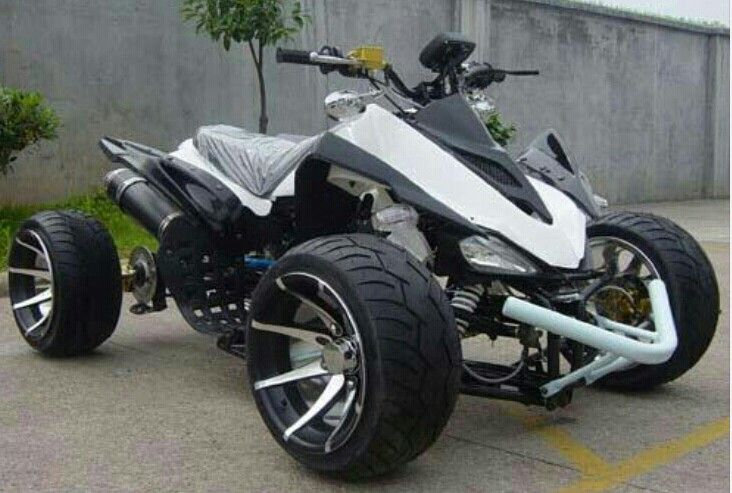
So how do you winterize your ATV? The entire preparatory stage can be divided into several actions that must be performed before driving ATVs:
 It is necessary to get rid of it, since at low air temperatures it can freeze. As soon as the water is drained, you can safely fill in high-quality antifreeze or antifreeze. Ignoring this operation will result in damage to the ATV as a result of the failure of various engine components.
It is necessary to get rid of it, since at low air temperatures it can freeze. As soon as the water is drained, you can safely fill in high-quality antifreeze or antifreeze. Ignoring this operation will result in damage to the ATV as a result of the failure of various engine components. ATV riding in the cold season has a number of features. What should be remembered when operating an ATV in winter? Main nuances:
 The average warm-up time is 5 minutes. During this period, the oil will have time to evenly disperse through all channels of the engine and guarantees smooth operation of the transport.
The average warm-up time is 5 minutes. During this period, the oil will have time to evenly disperse through all channels of the engine and guarantees smooth operation of the transport. Another additional recommendation is that the driver has winter equipment. This includes thermal underwear, windproof jacket, heated helmet, gloves and insulated boots. All this is necessary in order to fully enjoy outdoor activities in the winter.
All this is necessary in order to fully enjoy outdoor activities in the winter.
A special issue is storing the ATV in winter. The ideal option is a heated box or garage. Properly organized storage extends the life of equipment by several years. Often, owners store ATVs on the street, after covering it with a moisture-resistant cover. At the same time, many people remove the battery and take it into the house, to a warm room.
If you do not plan to travel in winter, you must drain the fuel, not only from the tank, but also from the hoses. The second option is to add a stabilizer to the tank. After that, do not forget to start the engine and leave it at idle until the fuel fills the entire system. Following one of these rules will ensure proper storage of vehicles in winter and extend their service life.
So, is it possible to ride an ATV in winter? Yes, you can! The main thing is to properly prepare the vehicle for the onset of cold weather and correctly operate it during this period.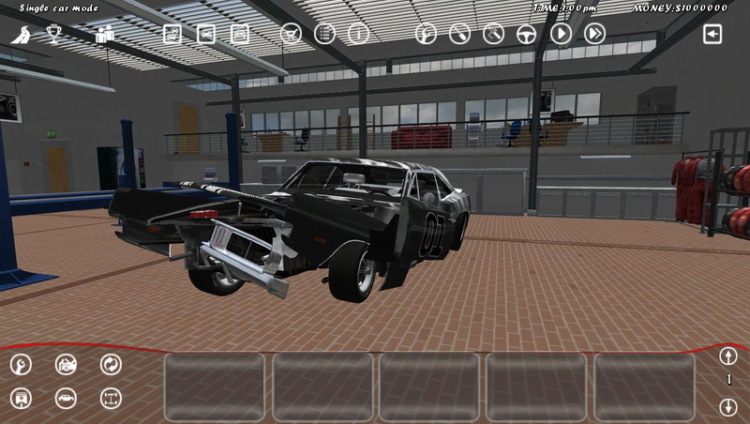
You may also be interested in 5 990 ₽
Code: 2909/9066
MINIPRO Mi 606
16 000 ₽
Code: 3221/4955
VOLTECO CYBER
74 970 ₽
Code: 5916/3274
Toyota Hilux
33 950 ₽
Article: 6051
Citycoco GT X7 BR20
97 990 ₽
Article: 6361 4 KingSong 90
0 whly in Moscow, St. Petersburg and Yekaterinburg
Free
test drive
Own service center
Learn to ride
in 5 minutes
Attentive team
Always in touch in our social networks! I will help you make the right choice of electric vehicles and motorcycles remotely.
I am writing posts and articles on Instagram, VK, Yandex Zen. I honestly talk about transport on our Youtube channel.
Anton Borodin
Content Manager
I will help you make the right choice of electric vehicles and motorcycles in messages or by phone.
I place ads on advertising platforms.
Dmitry Zhiznenko
Advertising platform specialist
My task is to add up-to-date information to the site, release reviews and other videos on YouTube in time, draw informative covers. I supervise many processes, including work with suppliers.
Regina Maslova
Content Manager
I will help you make the right choice of electric transport, both in our store in St. Petersburg, and remotely via video link, I will arrange prompt and careful delivery in St. Petersburg, the Leningrad Region and the regions of the Russian Federation.
Rustam Khabibullin
Electric transport selection specialist
Our entire team works to ensure that you can choose the best transport for you and use it with pleasure!
My task is to make sure that everyone who contacts our company receives high-quality advice and the goods they need without delay.
In case something went wrong
Notify me: [email protected]
Andrey Borodin
General Director
I will help you make the right choice of electric vehicles and motorcycles remotely, via video link, arrange prompt and careful delivery in St. Petersburg, the Leningrad Region and the regions of the Russian Federation.
In my free time I assemble ATVs.
Andrey Boykov
ATV assembly specialist. Call center operator
Every day I analyze and improve the company's business processes, select and check the assortment of our store so that you can get the best electric transport model for you on time and at the best price.
Vyacheslav Grebennikov
Commercial Director
I provide high-quality work of the store in St. Petersburg. My task is to make sure that everyone who applies to our company receives high-quality advice and the goods they need without delay.

You can contact me by phone.
Mikhail Stepanov
Store manager in St. Petersburg
My task is to visualize the product as detailed as possible. Most of the photos and videos on our website and social networks are created by me)
I work to make it easier to remotely select the model of electric transport you need.
Anna Shestopalova
Creative director
I will help you make the right choice of electric vehicles and motorcycles remotely, via video link, arrange prompt and careful delivery in St. Petersburg, the Leningrad Region and the regions of the Russian Federation.
Savely Ivanov
Electric transport selection specialist
Responsible for content creation and atmosphere on our social media. I shoot video reviews and take photos for our website.
My main task is to make sure that you can get the maximum information about the transport you are interested in without leaving your home.

I'm waiting for you in our YouTube, Instagram, VK, Yandex Zen and other sites!
Daria Ushakova
Head of SMM department
Do you have any questions?
Ask a manager
• Do not operate the ATV without wearing an appropriately sized crash helmet. It is also necessary to wear eye protection, (protective mask or goggles).
• Do not consume alcohol or drugs before operating an ATV.
• Always follow the instructions and follow the Instructor's recommendations.
• Before each use, make sure the ATV is in good condition and safe to ride. Always follow the rules and recommendations for driving given in the instruction.
• Always use extreme caution and drive slowly when driving in unfamiliar terrain.
• Always keep both hands on the handlebars and both feet on the footrests while riding the ATV.
• Do not operate the ATV on rough, slippery, damaged roads until you have learned and gained the practical skills necessary to control the ATV on such roads. Always be extremely careful when driving in such conditions.
Always be extremely careful when driving in such conditions.
• Do not operate the ATV on slopes that are too steep for the vehicle and for your experience. Practice on small descents before moving on to difficult ones.
• Always follow the appropriate instructions from the Instructor when entering the hill, check the road surface first, never enter the hill on a road that is too slippery or has a damaged surface. Shift your weight forward of the ATV, never suddenly open the throttle or change gears suddenly. Never drive up a hill at high speed.
• Always follow the appropriate instructions from the Instructor when descending and braking on the hill. Inspect the road carefully before descending. Shift your weight back, never go down a hill at high speed. Avoid going downhill at an angle that could cause the ATV to lean to the side. Go straight down if possible.
• Always follow the appropriate Instructor's instructions for crossing inclines. Avoid slides on excessively slippery or damaged surfaces. Shift your weight to the side of the lift. Never turn the ATV around on a hill until you have mastered the turning technique. On level ground, avoid crossing steep hills whenever possible.
Shift your weight to the side of the lift. Never turn the ATV around on a hill until you have mastered the turning technique. On level ground, avoid crossing steep hills whenever possible.
• To prevent the engine from stalling and the vehicle from reversing when entering a hill, use an appropriate gear and maintain a steady speed. If the engine stalls or the vehicle reverses, follow the Instructor's specific instructions.
• Always check for obstacles in the road before operating the ATV in unfamiliar terrain. Never try to overcome large obstacles on the ATV, such as large rocks or fallen trees. Always follow the Instructor's specific instructions for overcoming obstacles.
• Be careful when skidding or skidding when practicing at low speed on a flat, smooth road. On extremely slippery surfaces such as ice, drive slowly and be very careful to reduce the risk of slipping or skidding.
• Start decelerating some time before stopping.
• Remember that wet brakes reduce stopping power.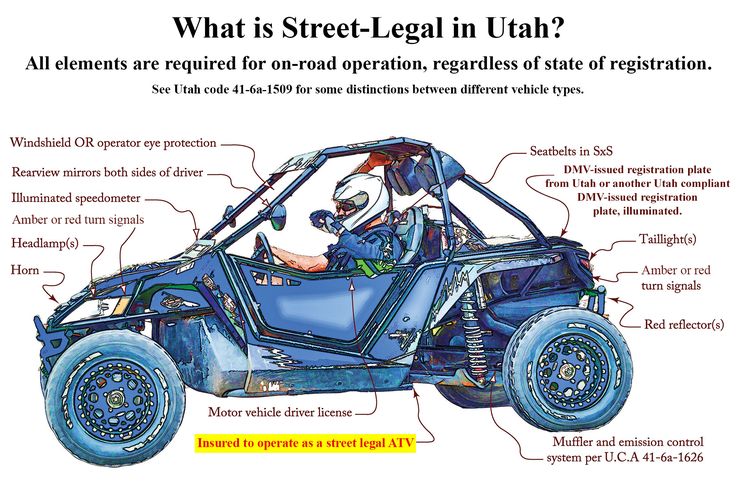 Check your brakes after getting out of the water, if necessary, wait a while for the pads to dry out.
Check your brakes after getting out of the water, if necessary, wait a while for the pads to dry out.
• Always be sure there are no obstacles or people behind you when you turn.
• Never exceed the ATV's stated load capacity. The load must be properly placed and securely attached.
• Never start the engine on a slope, as this may cause damage.
• Respect the age guidelines: children under 16 are not allowed to operate the ATV. Do not allow a person who does not know how to operate the ATV in a safe manner to operate the ATV.
• Avoid riding the ATV on paved roads, including driveways, sidewalks, streets, and parking lots.
• If you need to stop (frozen helmet glass, hands, etc.) do not wait for the group to stop. Raise your left hand up (stop signal for ATVs following you) and gently come to a stop.
- When riding an ATV, it is necessary to use protective equipment,
- Before the start of operation, it is necessary to be instructed on how to drive an ATV;
- It is necessary to comply with the speed limit, excluding collisions with obstacles, people and collisions with obstacles up to a stop;
- Do not succumb to the provocations of other citizens to participate in races; clashes and other actions that can directly or indirectly cause damage to property and citizens;
- Do not interfere with your actions or inaction to comply with these rules. The technique is very serious, so the rental of ATVs takes place only in the presence of an instructor, for those who love high speed;
The technique is very serious, so the rental of ATVs takes place only in the presence of an instructor, for those who love high speed;
-Citizens who have reached the age of 16 and weigh no more than 125 kg are allowed to ride ATVs.
- Driving ATVs while intoxicated or under the influence of drugs;
- Intentional collision with other ATVs;
- Deliberate collision with obstacles;
- Provoking others for a collision;
- Overtake the instructor and the ATVs in front;
- Deliberately fall behind the column and then catch up with the column at high speed;
- Do not follow the instructions of the instructor;
- touch moving parts such as wheels, drive shafts, variator pulleys, etc.;
- Departure to the road intended for the movement of vehicles;
- Talk aggressively, use profanity and do everything that can interfere with people around you;
- Operate the ATV by persons under 16 years of age.